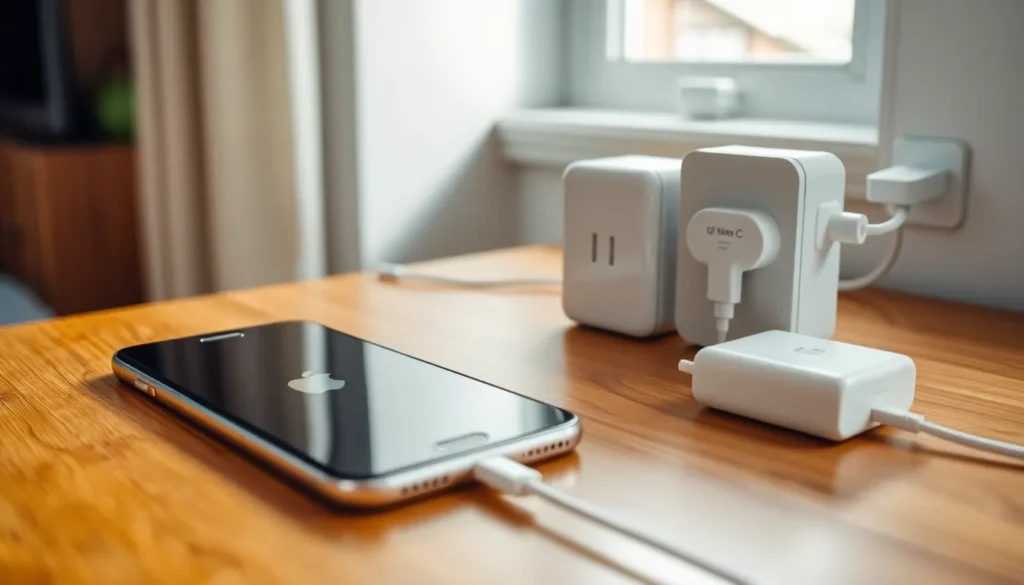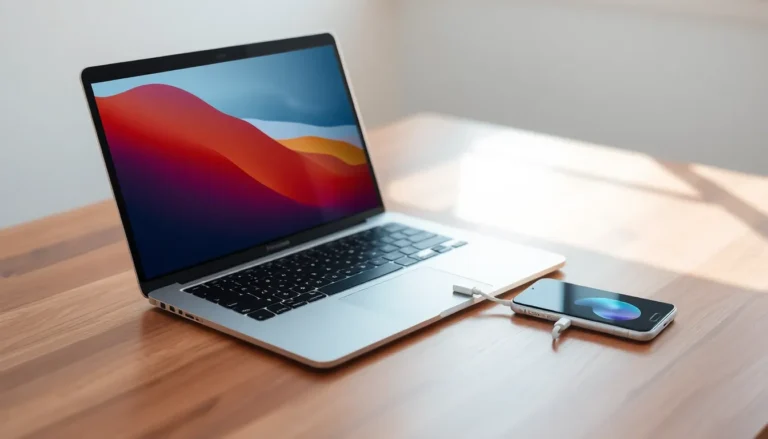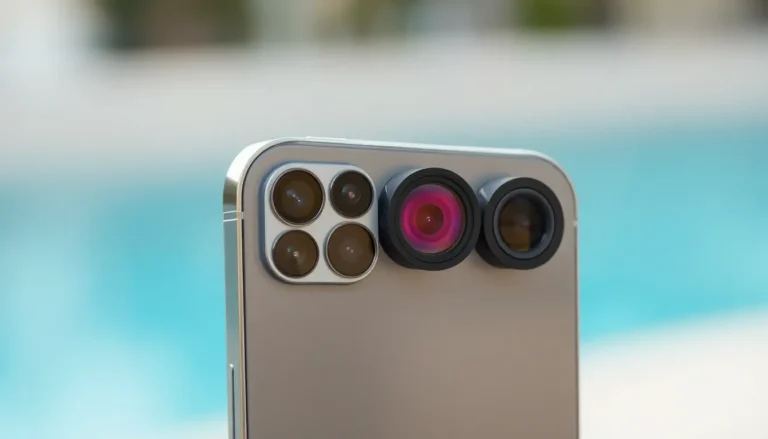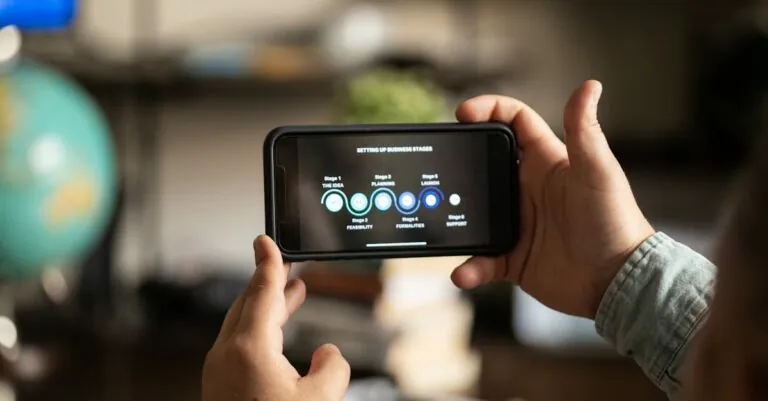Ever wondered how much power your trusty iPhone charger actually guzzles? It’s like that friend who always orders the most expensive drink at the bar—curious and slightly alarming. Knowing the wattage can help you make smarter choices about energy consumption and even save a few bucks on your electricity bill.
Table of Contents
ToggleOverview of iPhone Charger Wattage
Understanding the wattage of iPhone chargers provides insight into their energy consumption. Apple’s lineup offers various chargers, each with different wattage ratings. For instance, the standard charger typically produces 5 watts, suitable for slow charging.
Fast charging options, like the 20-watt adapter, optimize charging time for newer models. Certain models, such as the iPhone 13 and 14, can utilize this higher wattage, achieving up to 50% charge in about 30 minutes. Apple also offers a 30-watt version, applicable for certain iPad and Mac devices, showcasing versatility across products.
Energy efficiency plays a crucial role. Lower-wattage chargers consume less energy when not in use, especially when compared to higher-wattage alternatives. While chargers provide quicker charging, they can impact overall electricity consumption.
In addition, third-party chargers also exist, often offering varying wattages. Users must ensure compatibility with their device to avoid potential issues. Many brands, including Anker and Belkin, produce reliable options that support fast charging and can match Apple’s standards.
Data on charger wattage indicates that using a higher wattage charger doesn’t necessarily speed up charging if the device limits input. Charging speed ultimately depends on the device’s built-in circuitry. Charging multiple devices simultaneously may decrease each device’s charge rate.
Overall, selecting the right charger wattage balances charging speed and energy consumption. Understanding these factors empowers users to make informed decisions and potentially lower electricity costs.
Understanding Power Requirements
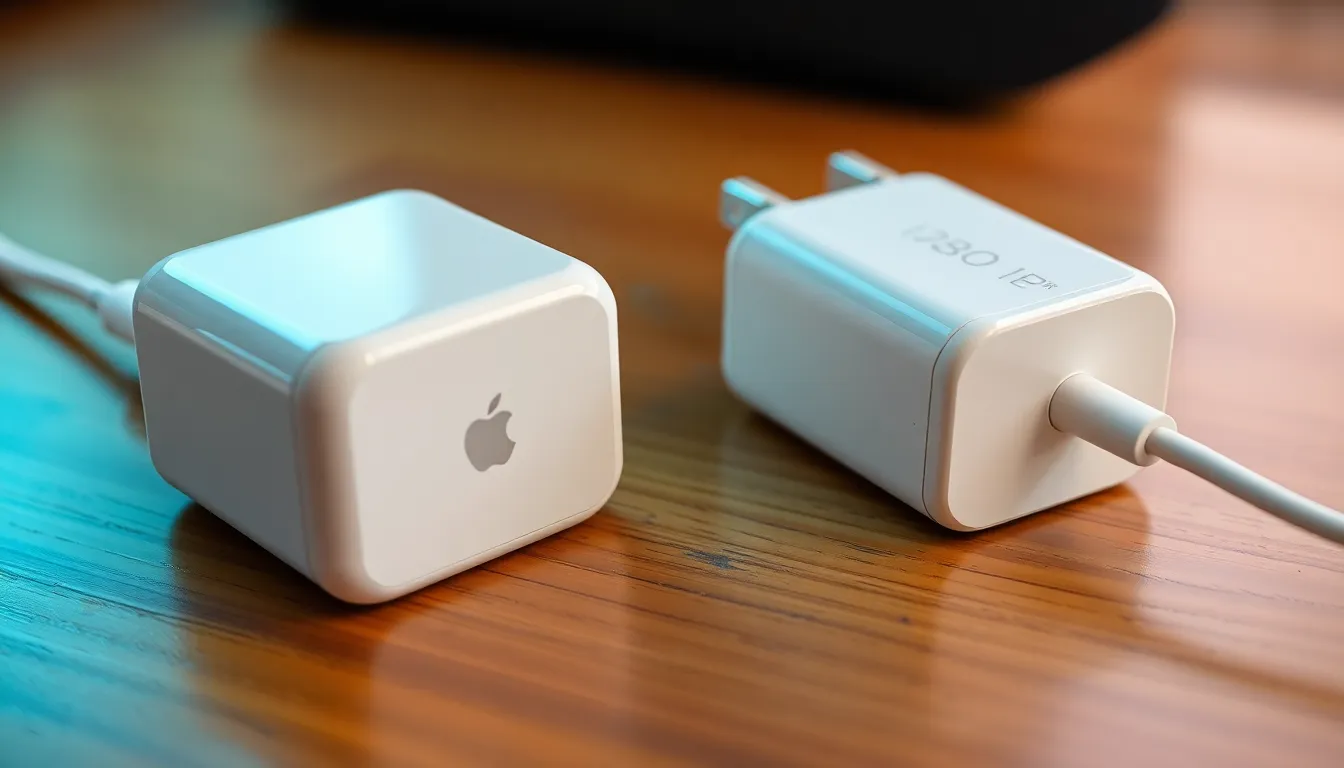
Charging devices efficiently requires knowledge of wattage ratings. iPhone chargers vary in power usage, influencing both performance and energy consumption.
Standard iPhone Charger Wattage
The standard iPhone charger delivers 5 watts. This low wattage suits slow charging scenarios, commonly used with older iPhone models. Many users find it effective for overnight charging. Lower wattage not only charges devices more slowly, but also conserves electricity when chargers remain plugged in. Despite delivering less power, the standard charger remains a popular choice for everyday use due to its simplicity and compatibility with all iPhone models.
Fast Charging Capabilities
Fast charging utilizes higher wattage for quicker charging times. Apple’s 20-watt adapter allows newer iPhones to reach a 50% charge in approximately 30 minutes. This significant speed advantage appeals to users needing rapid charging on the go. Newer models can support even higher wattage, enhancing convenience. Users must ensure their devices and cables support fast charging to receive these benefits. Compatibility plays a crucial role in optimizing charging efficiency without risking device safety.
Comparison of Different iPhone Chargers
Understanding the differences between iPhone chargers helps users choose the right one for their needs. Compatibility, charging speed, and energy consumption are key factors to consider.
5W vs. 12W Chargers
5W chargers provide a slow charging experience, suitable for older iPhone models. They conserve energy when plugged in, appealing to users looking to reduce electricity costs. In contrast, 12W chargers offer faster charging capabilities, reducing charge time for specific models. Users may experience a noticeable difference when charging newer iPhones, as the time required for a full charge decreases significantly. Efficiency remains high with both chargers, but selecting one often depends on the user’s device and charging habits.
USB-C Power Adapters
USB-C power adapters represent a modern charging solution for iPhone users. Options include 20W and higher wattage models, designed for rapid charging. These adapters cater to newer iPhone models, ensuring a fast charging experience. When paired with a compatible device, users can achieve a 50% charge in approximately 30 minutes. Energy efficiency is a highlight, as high-wattage options often provide more effective performance without excessive energy loss. Selecting the right USB-C adapter enhances user satisfaction while considering energy consumption, ultimately harmonizing speed and efficiency.
Importance of Charger Wattage
Understanding charger wattage is essential for optimizing device performance and user experience. Wattage influences both charging speed and the longevity of the device.
Impact on Charging Speed
Charging speed varies significantly between different wattage levels. Standard 5-watt chargers provide slower charging, making them suitable for older devices. In contrast, higher-wattage options, like 20 watts, enable rapid charging for newer models. Devices can reach up to 50% charge in around 30 minutes with such chargers. Users benefit from faster charging, particularly when time is limited. Ensuring compatibility with the device is crucial because using a mismatched charger may hinder optimal charging speed.
Effects on Device Longevity
Charger wattage plays a critical role in device longevity. Higher wattage chargers can generate more heat, potentially affecting battery health over time. Batteries degrade faster with excessive heat, leading to diminished capacity and shorter life spans. Using a low-wattage charger generally produces less heat, benefiting devices designed for slower charging. Adopting the appropriate wattage charger ensures balanced performance and longevity. Users must consider both the wattage and the device’s specifications to maintain battery health effectively.
Understanding the wattage of iPhone chargers is crucial for making informed energy choices. By opting for the right charger users can optimize their charging experience while potentially lowering electricity costs. Lower-wattage chargers like the standard 5W option provide energy efficiency and compatibility with all models. For those with newer devices faster options like the 20W adapter offer quicker charging without compromising device health.
Striking a balance between charging speed and energy consumption empowers users to maintain their devices effectively. By choosing the appropriate charger users can enhance performance while being mindful of energy usage.

